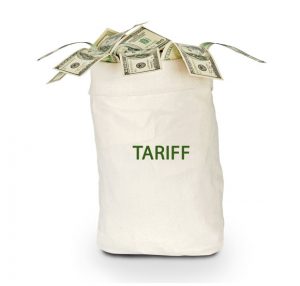Talking Tariffs, Part 3: Are Tariffs ‘Bad’ for the Economy?
[Editor’s note: This is the third and final part of our series on tariffs. In case you missed them, read Part 1 and Part 2.]
—
2002 Bush Section 201 Steel Tariffs
All of this background analysis brings us to the heart of the current debate: are the tariffs “bad” for the economy and manufacturing?
Need buying strategies for steel? Request your two-month free trial of MetalMiner’s Outlook
The only trade study published on tariffs that measures actual impact — as opposed to using models to support claims — sheds some light.
As previously reported by MetalMiner, a 2003 study used primary research with 419 steel-consuming companies, as opposed to econometric modeling. At the time, this represented fully 22% of all steel purchased by companies in the U.S. That study concluded “overall employment of steel-consuming industries generally fell or remained flat in 2002-03” compared with the previous two years, but that productivity and wages increased over the three-year period.
Moreover, the study noted a $30.4 million GDP loss — not nothing, but insignificant against the total.
Perhaps most ironically among steel-consuming companies, “overall sales and profits increased, while capital investment fell, for most steel-consuming industries in 2002-03 – the period after the implementation of the safeguard measures.”
Not all results were positive.
Half of industry respondents reported higher steel prices and 43% said that they could not pass those costs onto their customers. Some reported that producers broke contracts.
Finally, 32% of respondents saw higher lead times, while 46% of respondents noted difficulties in obtaining materials.
Which Brings Us Back to the ‘Model’ Studies…
The use of models remains inherently flawed because most models require the use of forward-looking data and assumptions.
The Coalition for a Prosperous America conducted a trade study that generated different results from the Koch study, primarily by taking into consideration actual baseline GDP and total employment data, and CBO forecasts for GDP and employment (the CBO is considered by policy wonks to be the most neutral of all economic reporting government entities).
That study also factored in industry plans and announcements from the steel industry and used the Regional Economic Modeling Inc’s (REMI) model, which is used widely by think tanks, state and local governments, etc.
Other Government Research Debunks Broader Negative Tariff Impact Claims
A Congressional Research Service (CRS) analysis points to negative impacts from the tariffs on steel and aluminum. That analysis, however, suggests a much narrower range of impacts from higher prices of steel and aluminum to lower imports of those same commodities.
The study also claims input costs will rise for downstream manufacturers. Certainly, prices have risen with the imposition of the tariffs. However, nobody has conducted research to determine if manufacturers could pass down costs and/or if their profits were lower, higher or about the same as prior to the tariffs.
In other words, have the higher prices actually impacted GDP and employment data?
The CRS study suggests the two biggest variables to consider relates to downstream prices and availability of imports, which will depend upon the range of product and country exclusions and the degree to which other countries retaliate.
Regardless, the ISM Report on Manufacturing released in December, which also relies upon primary research with downstream manufacturers, reported: “Despite U.S. tariffs on foreign steel and aluminum, prices for those key materials have declined, executives said.”
Those price declines mirror current commodity market conditions in which the overall bull market appears to have run out of steam. MetalMiner’s long-term outlook for both commodities and industrial metals shifted from bullish to bearish back in December 2018 and January 2019, respectively.
It’s easy to glob onto the mainstream trade war discourse and assume the widely circulated studies must serve as the whole truth. The truth, however, requires the media and the public to acknowledge real anti-tariff media bias, the actual overcapacity conditions that led to the imposition of Section 232 in the first place, and the impacts measured post-tariff as reported by those that actually, as opposed to theoretically, felt the impact (e.g. downstream manufacturing organizations).
MetalMiner’s Annual Outlook provides 2019 buying strategies for carbon steel
The “war” on trade requires all of us to dig deeper and perhaps seek to learn what we don’t know.



Leave a Reply